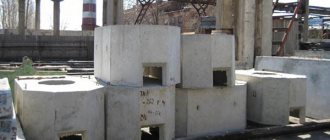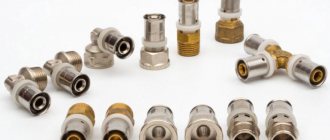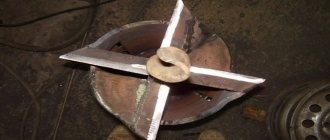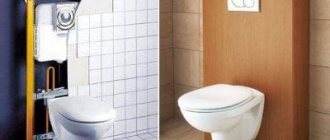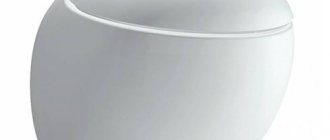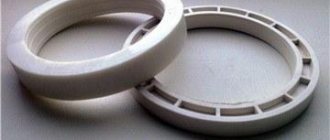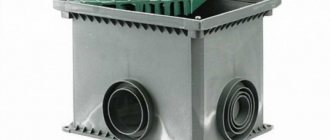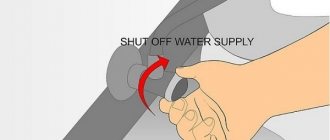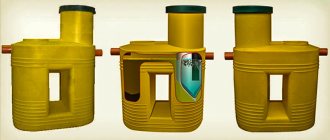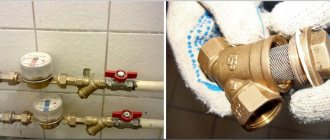A water valve is necessary to regulate the flow of liquid that moves through the pipes by changing the flow area. Such structures are attached not only to the edges of plastic pipes, but also in places where filters, pumps and other devices are connected. The type, dimensions and modification of the part will depend on the area where the valve is mounted, as well as on the functions it performs.
Types of valves
Shut-off and control valves are classified according to three criteria:
- body shape;
- type of locking part;
- installation method in the system.
According to the body shape, the valves are as follows:
- direct flow - the flow is blocked by the valve seat in the transverse direction;
- angular - the locking element moves towards the movement of the medium;
- mixing - to obtain the desired water temperature.
The locking element differs in design:
- Ball - a through sphere in a direct-flow housing. When the longitudinal axes of the hole and the body are aligned, the flow movement is completely open. Turning in a perpendicular direction stops the fluid flow 100%. The valve functions only as a shut-off element, and is not suitable for regulation. The use of the device is associated with its high reliability, speed of flow shut-off and compactness. Almost nothing breaks in it, since there are very few parts.
- Valve type - with a lock connected to a threaded rod screwed into the seat nut. The unit is used to regulate flow and to completely shut off the flow (in the lowest position).
- Needle - conical piston with control of fluid flow under high pressure (about 220 Bar).
Valve materials:
- ball: brass, stainless or structural steel;
- valves: cast iron, brass.
New materials are also being used to make valves. The polypropylene body makes the device durable and cheap at the same time. PTFE coatings improve resistance to corrosion and aggressive environments.
Types of locking mechanism
According to the type of constipation, all water valves and taps are divided into several types:
- Valve;
- Ball;
- Cork.
Below we will take a closer look at the features of all types of these devices.
Valve valve device
Valve
Valve taps are the usual locking mechanisms. The principle of their operation is based on blocking the passage with an elastic gasket mounted on the rod. The position of the rod is adjusted by a handwheel using a worm mechanism.
Thus, when the handle is rotated, the rod rises, resulting in the passage for water opening.
Among the advantages of this mechanism are:
- Ability to withstand high pressure;
- Ability to control flow;
- Ease of Management;
- Possibility of repair.
Along with the advantages, these products also have some disadvantages:
The gasket quickly fails because it comes into contact not only with water, but also with a metal surface. True, you can replace it yourself. As a rule, the device comes with an assembly drawing of the water valve, which shows how to disassemble the mechanism and replace damaged parts.
Removing the axle box gasket
- To completely open or block the passage, you need to make several turns of the flywheel yourself, which is not very convenient.
- The mechanism is less durable than other types of fittings.
For these reasons, recently such taps are installed quite rarely, only in cases where it is necessary to regulate the flow.
In the photo - a ball valve with a diameter of ¾
Ball
Ball water valves have recently become the most common. They received this name as a result of the fact that the locking mechanism is made in the form of a ball with a through hole. To block the flow, the ball is rotated with its hole perpendicular to the pipeline.
The plumbing ball valve has a number of advantages, such as:
- Durability due to the simplicity of the mechanism;
- Tightness when the passage is closed;
- To open the passage, you only need to turn the handle 90 degrees;
- Affordable price;
- Possibility of use in conjunction with servos and other devices that allow you to control the mechanism remotely or install it in automatic flow shut-off systems. (See also the article How to choose a mixer: features.)
Ball mechanism diagram
As for the shortcomings, there are few of them:
- The operating instructions for the device imply its use only to completely block or open a passage, i.e. it cannot be used to regulate flow. Otherwise, the mechanism will quickly depressurize.
- If the mechanism fails, it cannot be repaired.
Most often, this type of fittings is used in plumbing systems.
Plug tap
Cork
The design of a plug-type water valve resembles a valve valve, the only thing is that the flow is shut off using a conical plug, which is attached to the stem. When the rod is lowered, the plug enters the hole and tightly blocks the passage.
It should be noted that in recent years such fittings have been used extremely rarely in water supply systems, since more durable ball valves are installed instead.
Plastic ball valve 1 2 inches
Valve valve design and operation
The most important working part of the valve is the seat with a shutter moved manually by a spindle. The water valve, the design of which is shown below, contains threads in the body and on the stem, which have the property of braking. As a result, the valve disc is pressed tightly against the seat, shutting off flow when the valve is closed. In the open state, the flow area remains unchanged when the water flow moves.
Typically, the body is not threaded because it wears out quickly. To do this, a running nut is attached to it, into which the spindle is screwed. Then, instead of the worn-out unit, you can install another one, and the housing will be preserved. All parts are interchangeable with a water valve (GOST 12.2.063-81, GOST 5761-74).
The valve is opened by turning the handle. At the same time, the spindle moves progressively, freeing up the passage for liquid. If the rotation is performed in the opposite direction, the valve will close.
The device is connected to the pipeline through the inlet and outlet pipes. They can be distinguished from each other by the presence of an arrow indicating the direction of flow.
Types of taps
Water valves can be divided into several main types:
- Cone taps. Such mechanisms are used quite rarely, since they wear out very quickly, which leads to their frequent replacement.
- Valve valves. Among the advantages of such designs, one should highlight the ability to work even in very chlorinated water without losing technical features. Repairing such valves is relatively simple and often only requires replacing the seal.
- Ball valves consist of a special housing that houses a ball with holes. When turning it, this allows you to both block and open the flow of water. Such systems are very often used in household systems and have different designs, which allows them to be selected for any type of interior.
It should be noted that water valves can have different types of connection to the main pipe:
Angle valves
To change the direction of fluid transmission perpendicularly with the possibility of shutting off and adjusting, a water angle valve is used (drawing below: a - through passage; b - angular).
The perpendicular arrangement of the inlet and outlet pipes determines the purpose of the valve for pipelines that change direction by 90°. The principle of its operation is the same as that of the pass-through. The valve moves coaxially with the inlet pipe.
Areas of application for angle valves:
- When supplying pipes to a heating radiator, when it is closed or the coolant flow is regulated by a water valve (see photo below). Models made of high-temperature polypropylene are more convenient and cheaper than brass ones when connected to plastic pipes.
- Prevention of vibration and rocking of pipelines.
- Reduces fluid flow rate without high frequency noise.
- In fire-fighting water pipelines when used in any position.
- Simplification of pipe installation by reducing the consumption of fittings.
Design and principle of operation of a ball valve
The main working part of the valve is a ball with a through hole. When the handle is positioned along the pipe, the valve is open. If you turn it perpendicular to the pipe, it will close. The hole in the ball can be round, square, trapezoidal or oval. In small-diameter valves, the valve is made floating, and for large-sized devices it is made on special supports. High tightness of the valve is ensured by an elastic seal. This allows this type of model to be installed on gas pipelines.
The water ball valve operates in two extreme positions when rotated 90°, when it is completely open or closed. Trying to control the flow rate will cause rapid wear of the seal.
Ball valves have wider possibilities for connecting pipes when installing water supply systems:
- checkpoints;
- corner;
- with three or more outlets for the purpose of redirecting transported flows.
Connections to pipes are made with fittings, flanges and welds. The latter option allows you to permanently install a water valve into the system.
Details
Types of materials for devices
The materials used to manufacture the devices vary depending on the application of the valves: inside or outside buildings. Internal systems are equipped with valves made of brass, bronze plastic material, and stainless steel. External networks use devices that are made of the same materials as for internal pipelines; they can also be made of cast iron and steel material.
The most expensive devices are made of bronze and brass material, and they are considered durable. They are compact, lightweight, and the valves install hot and cold water pipes. They are installed in the heating system, since these parts are not subject to scale formation on the surface.
Devices made of stainless steel have a long service life. Due to the material, the products are much cheaper than devices made of bronze and brass. Plastic parts are considered the cheapest, having average technical characteristics. Products made from this material are widely used in all plumbing and heating systems.
Types of connection to the pipeline
The fittings are distinguished by the method of joining the element to the pipe. There are two ways:
1. coupling method (threaded). The elements are connected using threads, which are located outside or inside the part. Valves are installed using this method in internal and external household networks.
Attention! The coupling method is suitable for pipelines in which the pressure does not exceed 1.6 MPa.
2. The flange method is used for cast iron or steel products, the ends of which are equipped with flanges. The valves have an impressive weight and size. They are installed on large water mains or in the industrial sector. Withstand pressure inside the network over 10 MPa.
The coupling type of valve is installed in the system using a thread, which must be equipped with the ends of the pipes intended for connection. You can make the carving yourself using a die. The size of the die must be equal to the diameter of the valve device and thread parameters. You can also use the welding method to install bends on pipes that are equal in diameter to the valve and thread number.
Attention! To seal the connections between the pipe and the valve, a thread or fum tape is used.
If the valves have threads on the outside, then use additional fasteners in the form of American ones. They are union nuts equipped with rubber gaskets. An American one is put on the end of the pipe. Next, a pipe with a lip at the end is welded to the rolled pipe. It serves as a support for the union nut when the valve device is screwed onto the thread.
Flange-type devices are installed on pipelines by installing these elements at both ends of the pipes. Flanges are connected to pipes using any type of welding.
Method of connecting valve plastic devices
To connect a plastic valve to a pipe, welding is used with a special welding machine. The pipe and valve are made of plastic; their connection involves welding, during which the parts are heated to the softening temperature of the plastic.
The pipe is heated from the outside, the valve device is from the inside of the pipe. When the plastic of the pipe becomes soft, a rolled pipe is inserted into the pipe, allowing time to cool. The pipe with the valve is soldered at the molecular level, resulting in a non-separable sealed structure.
Shower faucets
The device is made as a single-lever ball valve or in the form of two valve valves. The kit includes a replacement shower head with attached flexible hose and bathtub spout. The mixer is hidden, with only the water temperature control valves exposed.
The classic option is a two-valve accessory with manual temperature control. Cold and hot water are mixed in a special chamber and then flowed into the shower hose or spout. The main elements of the device are two crane axle boxes with replaceable gaskets.
A single-lever device with convenient water adjustment is becoming popular. The main element of the mixer is a replaceable cartridge. If it fails, it can be easily removed and replaced with a new one.
With a built-in thermostat, adjustments are simplified. It is pre-set, which guarantees water output at the desired temperature. For this purpose, the housing contains a thermostatic element that distributes the flow. The only drawback of such models is the high price.
Installation
Small diameter valves are installed on threads (up to 60 mm). There is a bend on the pipe, the connection is sealed with hemp or fluoroplastic film. Winding is done in the direction of twisting the thread. This creates a tight connection that can withstand high pressure.
A large diameter pipe is connected by a flange to the washer of a direct-flow or angle valve through a sealing gasket. They are tightened together using bolts and nuts. The flange is connected to the pipe by arc welding.
Water valve: repair
If the valve shut-off element is damaged, it is replaced with a similar, unworn or new unit. To do this, a section of the pipeline is freed from liquid, blocking it on both sides. Then the valve-type shut-off element is dismantled. The ball valve can be removed completely using open-end or adjustable wrenches. On the flanges, the nuts are twisted parallel and gradually - 3-4 turns on each.
First, you should check the serviceability of the seals, which are replaced when worn. Leaks mostly occur due to deformation of gaskets and thread breakage due to improper installation. Then the body and seat are inspected. If there are no cracks, the assembly is reassembled. The housing cannot be repaired if mechanical damage appears on it. The growth to the pipeline requires cutting it and the need for further welding work.
In this case, you will have to install a new or repaired water valve. An unprepared person should not undertake complex repairs due to ignorance of its features.
Shut-off valves create additional resistance, so blockages may form at the connections. It is not always necessary to remove valves. Sometimes it is enough to simply flush the pipelines by opening all the taps.
Replacing the oil seal can be done carefully with your own hands. To do this, you need to shut off the water supply from the riser, disassemble the locking mechanism, replace the gaskets and lubricate the moving parts.
Installation of fittings on flanges
Flanges are elements in the design of a shut-off device that are connected to the same symmetrical pipe fragments with bolts. Replacement of locking devices on flange connections is carried out as follows:
- All bolts are removed, and those that cannot be unscrewed must be cut off with a grinder.
- Contaminants on the flanges are removed and the working surface is leveled.
- New gaskets are installed between the flanges, and the device is bolted together.
Basic rules when installing shut-off equipment:
- The internal surface of the pipeline at the work site is cleaned.
- The surface of the flanges must be ideal: smooth, without cracks, scratches or chips.
- The best way to protect against water hammer is to install a check valve.
- If the valve is too heavy and large, you need to provide additional support for it. This will reduce the risk of distortion and deformation of the installation site of the locking unit.
